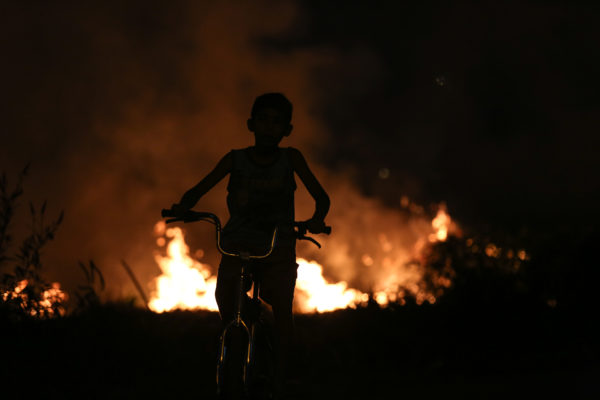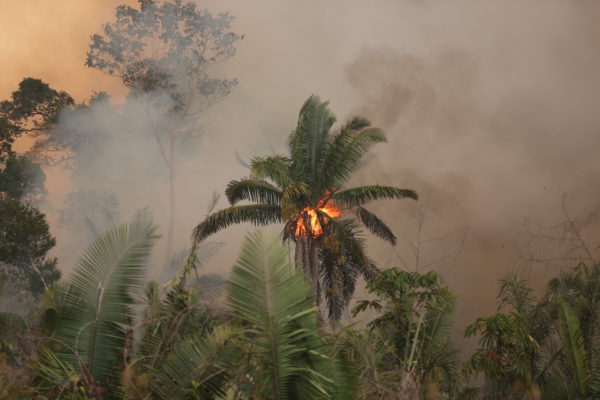It’s Amazon Day. And yes, it’s still on fire
On Amazon Day we should all be celebrating South America’s biodiversity-rich rainforest and the unique benefits it provides the planet. But while media coverage has been reduced to a smolder, flames are still engulfing parts of the Amazon. These fires are threatening millions of Indigenous people and millions of wildlife who call the Amazon home and releasing centuries of stored carbon into the atmosphere.
Wildfires in the Amazon are not unusual this time of the year, yet the sheer scale and intensity of the current situation is exceptional. Throughout 2019, the total area of Amazon destroyed by fires is estimated at around 43,753 square kilometres, an increase of almost 150 per cent over last year.
The burning began as thousands of small fires. These were likely lit for land grabbing, illegal mining and clearing land for agriculture and unsustainable infrastructure development. And, of course, it is the Indigenous communities and wildlife dependent on these forests that suffer the most.
The Amazon is home to 10 per cent of all biodiversity on the planet, including about 40,000 plant species, 365 endangered wildlife species and thousands of unique species such as the Amazon river dolphin, jaguar and two-toed sloth.
It is also home to many Canadian birds like the purple martin, barn swallow and common nighthawk who are already en route to the Amazon for their annual fall migration. According to WWF-Canada’s Living Planet Report, these birds have already suffered from major population declines and having a healthy and intact winter home in the southern hemisphere is a critical component for the recovery of these animals. But if the Amazon keeps burning, it could affect the future existence of our own species.
In addition to rich biodiversity, the Amazon is also key to fighting the climate crisis – its trees contain up to 140 billion tonnes of carbon, the equivalent of what humans produce in 100 years. Put simply, there’s no way we can slow climate change without stopping the destruction of our forests, and the Amazon is our planet’s biggest rainforest.
The Amazon’s importance for biodiversity also cannot be understated – especially amidst a global biodiversity crisis with, according to a recent UN report, a million species under threat of extinction. WWF’s study Below the Canopy, the first global forest biodiversity assessment, showed that monitored bird populations, mammals, amphibians, and reptiles living in forests decreased by an average of 53 per cent from 1970 to 2014. Habitat loss and degradation caused mainly by human activity was identified as the cause behind 60 per cent of the threats facing forests and forest species, with greater declines in tropical forests such as the Amazon.
WWF is urging world leaders to declare a planetary emergency and secure a “New Deal for Nature and People” by 2020 to address the climate crisis, protect remaining nature, and make our consumption and production systems more sustainable. Protecting and restoring forests must be at the heart of this agreement – on Amazon Day, and every day.



